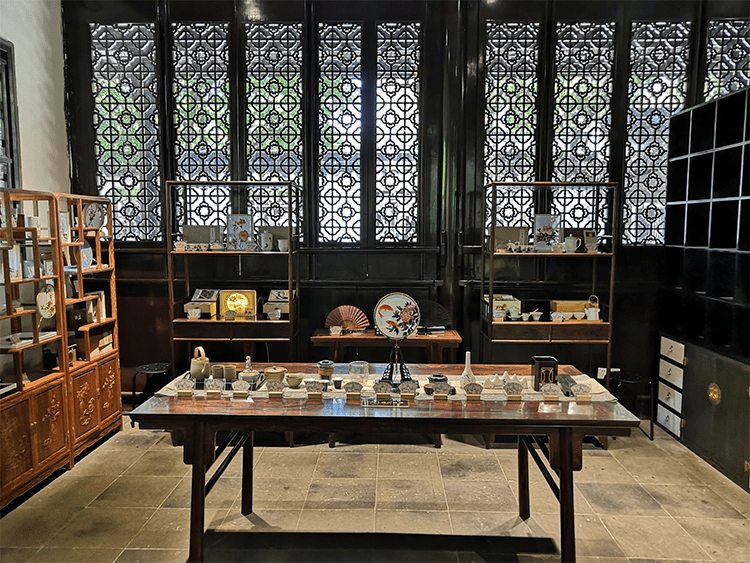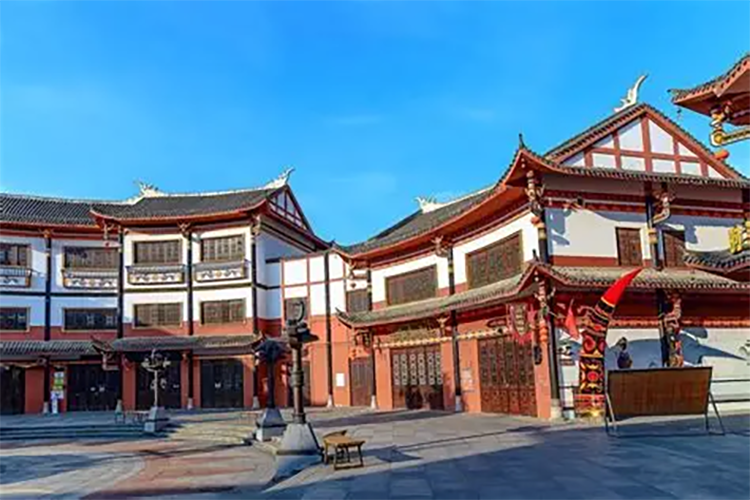Lady Shexiang: Explore Shexiang Museum and the Legend of a Yi Woman Leader
Introduction: A 600-Year Journey to Meet a Yi Heroine
Nestled among the green hills and clear waters of Bijie, Guizhou, Shexiang Museum honors a remarkable figure in southwest China’s history—Lady Shexiang, a Ming‑era Yi stateswoman renowned for her political skill and leadership. Called the “Yi Empress Wu” by some historians, she built post roads, promoted ethnic unity, and left a legacy that the museum brings to life with traditional architecture, regional artistry, and immersive exhibits.
1. Museum Features and Focus
Shexiang Museum is a specialized institution dedicated to Yi history and culture, centering on Lady Shexiang’s life and her lasting impact on Guizhou. As a national third‑class museum, it plays a key role in researching the Yi people of northwest Guizhou and presents a rich collection of artifacts and interactive displays that let visitors experience Yi history, art, and governance firsthand.
Unique Selling Points:
– Legendary narrative of a Yi stateswoman: The museum foregrounds Lady Shexiang’s political achievements and cultural contributions.
– Living Yi culture on display: Rare Yi manuscripts, lacquerware, traditional costumes and silver ornaments reveal the Shuixi Yi aesthetic and craftsmanship.
– Digital and interactive upgrades: Since a 2019 renovation, virtual exhibitions and multimedia installations animate the past for modern visitors.
2. Architecture and Historical Background
Built in 1993 and covering about 1,600 square meters, the museum’s main building adopts an antique architectural style infused with Yi decorative elements—carved doors and windows, sloped roofs, and timber framing that feel both dignified and regionally authentic.
Architectural Highlights:
– A blend of Yi motifs and modern design: Totemic patterns and the Yi palette of red, black, and yellow appear throughout the facades and interiors.
– Historical scene reconstructions: Key spaces recreate scenes such as the Longchang Nine Post Stations (“Longchang Jiuyi”), evoking the Ming‑era transport and communication network Lady Shexiang helped establish.
3. Treasures and Key Exhibits
The museum holds more than 400 artifacts, including five items listed as nationally important cultural relics. Highlights worth special attention include:
(1) Ming‑era Yi Script Stele
This rare stone inscription records Lady Shexiang’s political accomplishments and serves as a primary source for studying Yi history. The unique Yi script engraving demonstrates the depth of local literary traditions.
(2) Shuixi Yi Tusi Official Seal
A symbol of authority, this intricately carved metal seal testifies to Lady Shexiang’s governance over Shuixi and showcases advanced Yi metalworking techniques.
(3) Yi Lacquerware and Costume Collection
Vividly colored traditional garments and lacquered objects—especially the Chalwa (Yi cloak) and silver jewelry—illustrate the craftsmanship, fashion, and daily life of the Shuixi Yi community.

4. Exhibition Layout and Cultural Narrative
The permanent exhibition is organized into six thematic units that trace Lady Shexiang’s life and the Shuixi Yi historical arc:
1. Lady Shexiang’s Life: From birth to becoming a regional leader.
2. Longchang Nine Post Stations: How the post roads enhanced communication between Guizhou and Central China.
3. Ethnic Unity Policies: Her strategies for balancing central dynastic rule and local tusi governance.
4. Yi Culture: Language, religious practices, and social structures of the Shuixi Yi.
5. Collection Highlights: Selected Yi manuscripts, lacquerware, and costumes.
6. Modern Influence: How Shexiang’s spirit endures in contemporary cultural life.
Exhibition Highlights:
– Multimedia interaction: Touchscreens and projected animations make historical narratives vivid.
– Authentic set pieces: Recreated post roads and tusi residences enhance immersion and contextual understanding.
5. Visitor Experience and Audience
Recommended for:
– History and culture enthusiasts: Insightful coverage of Yi society and Ming‑era frontier administration.
– Students and researchers: Valuable Yi manuscripts and original artifacts for academic study.
– Cultural travelers: Attractive Yi costumes and lacquerware appeal to those exploring ethnic art and traditions.
Atmosphere:
The museum maintains a solemn, peaceful ambience ideal for reflective visits. Interactive zones add hands‑on interest, making parts of the museum suitable for families with children.
6. Practical Information
Opening Hours and Admission:
– Open: Tuesday–Sunday, 9:00–17:00 (closed Monday)
– Admission: Free (no reservation required)
Getting There:
– Address: Dafang County, Bijie City, Guizhou Province
– Public transport: Take a bus from Bijie city to Dafang County, then a short taxi ride (approximately 10 minutes).
– Driving: Onsite parking is available and convenient for self‑drive visitors.
Guided Services:
– Audio guides: No English audio guide is currently available, though exhibit panels include Chinese and English descriptions.
– Guided tours: Chinese docent services can be booked in advance (additional fee may apply).
Facilities:
– Wi‑Fi: Complimentary Wi‑Fi is available inside the museum.
– Rest areas: Seating and drinking water are provided.
– Accessibility: Wheelchair ramps and accessible routes make the site suitable for senior visitors.

7. Local Tips from Residents
– Best photo spots: The Yi costume display and the Longchang Nine Post Stations reconstruction.
– Hidden gem: The second‑floor Yi manuscript cabinet allows close viewing of ancient script forms.
– Avoid pitfalls: The museum is closed on Mondays; flash photography is prohibited inside exhibits.
8. Nearby Attractions
– Baili Azalea Scenic Area (about 1 hour): In spring, vast rhododendron blooms create stunning landscapes.
– Zhijin Cave (about 2 hours): A world‑class karst cave system for geology and nature enthusiasts.
Conclusion: A Time‑Crossing Yi Cultural Experience
Shexiang Museum is both a shrine to a Yi heroine and a window into Guizhou’s ethnic history. Whether you come to trace Lady Shexiang’s extraordinary life or to admire superb Yi handicrafts, the museum offers a memorable cultural experience. Add it to your Guizhou itinerary if you’re curious about minority histories and regional heritage.


